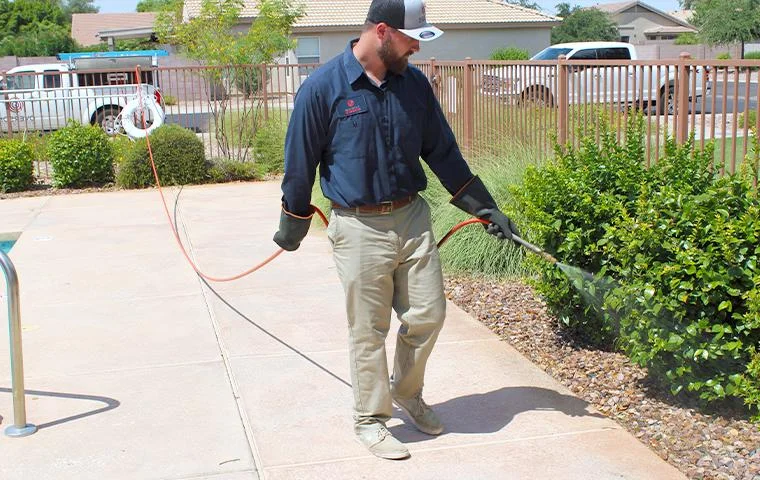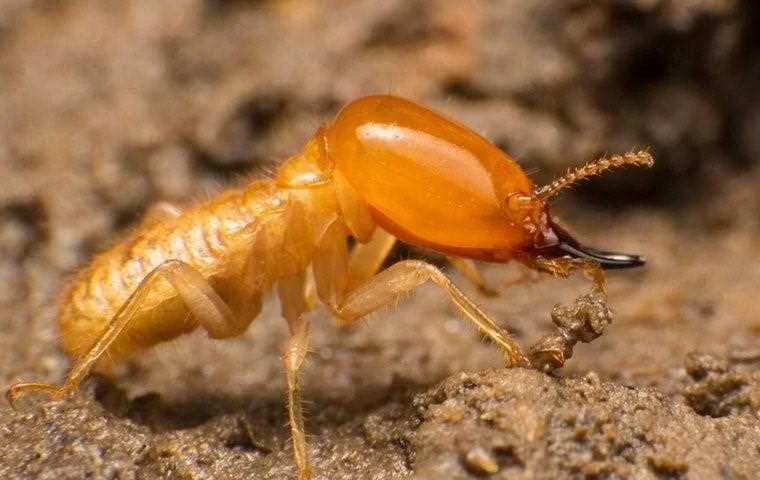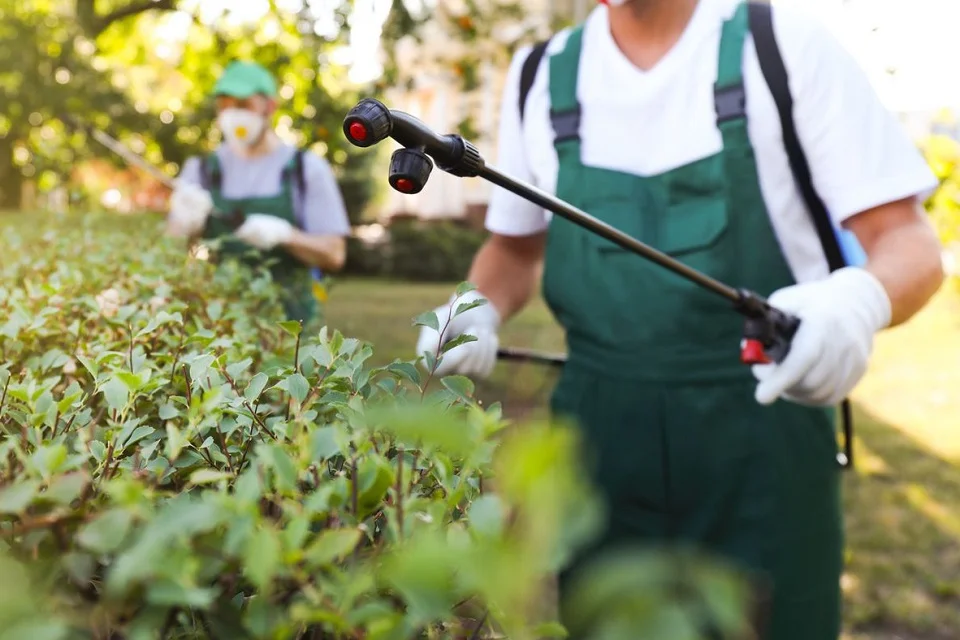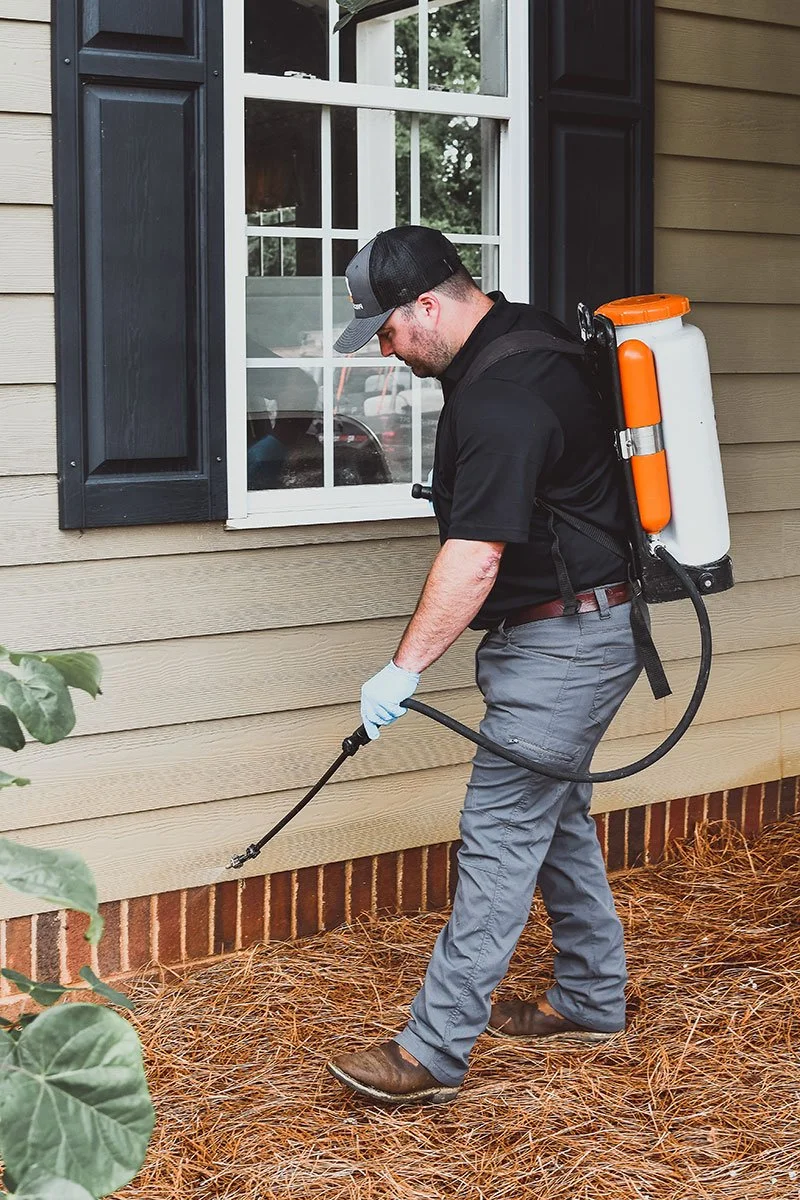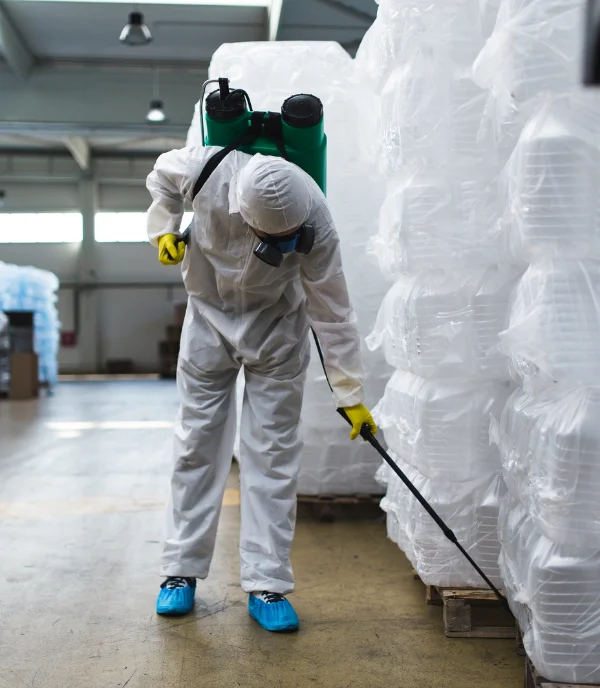From the red rock deserts of southern Utah to the alpine forests of the Wasatch Mountains, Utah's diverse landscapes create unique pest management challenges. The state's arid climate with distinct microclimates—from Salt Lake Valley's hot summers and cold winters to the high desert of eastern Utah—means pest behaviors and pressures vary dramatically across regions. Professional pest control in Utah requires understanding these geographical differences and how Utah's unique environmental conditions influence pest habitats, behaviors, and seasonal patterns.
Homeowners and businesses throughout Utah face recurring challenges from pest infestations that can damage property, compromise health, and disrupt daily life. That's why many residents rely on professional exterminators who understand the region's specific pest pressures. Local experts recognize that both preventive approaches and targeted treatments are essential to maintaining pest-free properties across Utah's diverse environments. In this guide, we'll explore common Utah pest problems, effective management strategies including eco-friendly pest solutions, and why partnering with local professionals provides the most reliable protection for your home or business.
Dealing with a pest emergency? Our Utah team provides
emergency pest control
24/7 and comprehensive
pest inspections to protect your property.
Contact us for prompt, reliable service!
Pest Control Challenges Specific to Utah
Utah's unique environment creates distinctive pest control challenges that require specialized knowledge and approaches. Here's why pest control in Utah demands tailored solutions:
-
Dramatic climate variations Utah experiences extraordinary climate diversity, from the Mojave Desert conditions in the southwest to alpine environments in the northern mountains. These variations create distinct pest patterns even within short geographical distances. Salt Lake City's valley floor faces different challenges than nearby Park City's mountain elevation, while St. George's desert climate supports entirely different pest populations than Logan's northern valley environment. These microclimates demand region-specific pest management strategies rather than one-size-fits-all approaches.
-
Arid conditions with irrigation Utah's naturally dry climate, combined with extensive irrigation and water management systems, creates unique pest dynamics. The contrast between arid natural landscapes and well-watered residential properties creates "islands" of habitat that concentrate certain pests in developed areas. Voles, ants, spiders, and various insects are drawn to irrigated landscapes in otherwise dry environments, creating focused pest pressure on residential and commercial properties, particularly during hot summer months.
-
Rapid urban expansion Utah's fast-growing communities, particularly along the Wasatch Front and in Washington County, are expanding into previously undeveloped areas. This development disrupts established pest habitats and often creates surge pest problems as displaced organisms seek new shelter. Newer communities in areas like Lehi, Herriman, or St. George frequently experience heightened pest pressure during and after construction as native species adapt to the changed environment.
-
Elevation effects Utah's significant elevation changes—from below 3,000 feet in the southwest to over 13,000 feet in the mountains—influence pest life cycles, species distribution, and treatment effectiveness. Higher elevation communities like Park City, Heber, and mountain resort areas experience different pest seasons and species than valley locations. These elevation differences also affect how quickly pest populations rebound after treatment and which control methods work most effectively.
-
Invasive species pressure Utah faces growing challenges from invasive pests not historically present in the state. European earwigs, hobo spiders, elm seed bugs, and more recently, spotted lanternfly threats require specialized identification and management approaches. The state's position as a transportation hub with major interstate corridors increases the risk of new pest introductions that can quickly establish in suitable microclimates throughout Utah.
These factors make informed, adaptable pest prevention particularly important for Utah property owners. Professional pest management companies familiar with these regional challenges can develop customized strategies that address Utah's specific seasonal and environmental factors while protecting your property throughout the year.
Common Pests in Utah
Utah's unique climate and diverse geography support a variety of persistent pests. Here are the most common invaders that Utah homes and businesses encounter:
Box Elder Bugs
Box elder bug treatment in a Salt Lake City home
Box elder bugs are among Utah's most recognizable and persistent seasonal invaders. These black and red insects breed on female box elder trees, maples, and ash trees during warm months, then seek shelter in homes and buildings as temperatures drop in fall. While they don't cause structural damage or bite, their tendency to gather in large numbers on sun-warmed exterior walls before finding their way inside creates significant nuisance issues for many Utah homeowners.
Effective management of box elder bugs requires a proactive approach focused on preventing their entry before cold weather drives them indoors. Professional treatment typically includes targeted applications to exterior walls, entry points, and overwintering harborage areas in late summer and early fall, creating barriers that prevent mass invasion. For properties with recurring issues, evaluation of landscape elements—particularly the removal or treatment of female box elder trees near structures—may provide longer-term relief from these persistent seasonal invaders.
Ants
Pavement ant treatment in an Ogden property
Utah's landscapes support multiple ant species that regularly invade homes and businesses. Pavement ants commonly infest properties along the Wasatch Front, establishing colonies in soil next to foundations, under pavement, and occasionally within structures. Carpenter ants, though less common, can be found in higher elevation areas with greater moisture and can damage wood structures. Field ants establish large outdoor colonies in lawns and adjacent natural areas, creating unsightly mounds and occasionally entering buildings.
Professional ant management typically involves identifying the specific species, locating nest sites, and implementing targeted treatment strategies that eliminate colonies rather than just visible workers. For most Utah properties, effective ant control combines exterior perimeter treatments, targeted nest applications, and when necessary, specialized baiting programs that allow workers to carry control materials back to queens and developing larvae. Long-term success often requires addressing conditions that attract ants, such as excessive moisture, food sources, or landscape elements that support ant colonies near structures.
Spiders
Spider treatment application in Provo
Utah's arid environment supports a diverse spider population, with several species regularly entering homes and creating concern for residents. Black widow spiders are native to Utah and most common in warmer areas like Washington County, though they can be found statewide in protected outdoor areas. Hobo spiders, an introduced species now established throughout northern Utah, are common home invaders in late summer and fall. Various wolf spiders, jumping spiders, and cellar spiders are also frequent home invaders, particularly in homes near undeveloped areas or agricultural land.
Effective spider management typically combines habitat modification to reduce harborage areas around structures, exclusion work to seal entry points, and targeted applications to areas where spiders travel and hide. For properties with significant spider pressure, regular perimeter maintenance throughout the active season provides the most reliable protection. While most spiders provide beneficial pest control in garden and landscape areas, comprehensive management plans balance this ecological value with appropriate protection for living spaces.
Wasps and Hornets
Utah's dry climate and abundant sunshine create ideal conditions for paper wasps, yellowjackets, and hornets to establish colonies around homes and businesses. These stinging insects commonly build nests in eaves, under decks, within wall voids, or in nearby trees and shrubs. As colonies grow throughout summer, they can create significant sting hazards, particularly concerning for those with allergies or properties where children play.
Professional management of stinging insects involves identifying the specific species, locating and treating active nests, and implementing preventive measures for future seasons. Treatment approaches vary based on nest location, species, and property characteristics, often requiring specialized equipment and protective gear for safe management. For properties with recurring stinging insect issues, preventive treatments to common nesting areas in spring can discourage colony establishment and significantly reduce summer problems.
Voles and Rodents
Utah properties face challenges from both native rodent species and introduced pests like house mice and Norway rats. Voles frequently damage lawns and ornamental plantings, particularly in snow-covered landscapes where their feeding activity goes unnoticed until spring reveals tunneling and plant damage. Deer mice commonly invade outbuildings, seasonal cabins, and occasionally homes, particularly in rural and mountainous areas. House mice and rats are more prevalent in urban settings and areas with agricultural activity.
Effective rodent management requires a comprehensive approach combining exclusion work to prevent entry, habitat modification to reduce attractiveness, and strategic placement of monitoring and control devices. Professional treatment typically includes thorough inspection to identify entry points and activity patterns, followed by customized control strategies targeted to the specific rodent species and property characteristics. For seasonal properties in mountain or desert areas, specialized services addressing periodic occupancy patterns help prevent damage during vacant periods.
Eco-Friendly Pest Control Approaches
Utah's magnificent natural landscapes and commitment to environmental stewardship have increased demand for eco-friendly pest solutions that effectively address pest problems while minimizing environmental impact. Modern integrated pest management (IPM) approaches provide effective control with reduced reliance on chemical treatments. This comprehensive strategy combines inspection, monitoring, habitat modification, exclusion, biological controls, and targeted applications of reduced-risk products only when necessary.
Many Utah pest control providers now offer green service options that prioritize environmental protection while effectively managing pests. These programs often utilize reduced-risk products, botanical insecticides derived from plant oils, physical exclusion techniques, and targeted applications that minimize impact on beneficial organisms. For properties near sensitive areas like watersheds, wildlife habitats, or Utah's many natural preserves, these eco-friendly approaches help maintain effective pest control while protecting the state's precious natural resources.
Utah Watershed Protection
Our Utah pest specialists are trained in watershed-friendly practices that protect the state's critical water resources and high desert ecosystems while still providing effective pest management for your property.
Below is a comparison of different eco-friendly pest management approaches commonly used in Utah:
| Approach |
Benefits |
Best Applications |
| Desert-Adapted Landscaping |
Reduces water-dependent pests; minimizes attractive habitat; creates natural barriers to pest movement.
|
Reducing ant and vole pressure around foundations, decreasing spider harborage, managing water-seeking pests in arid regions.
|
| Physical Exclusion |
Prevents pest entry without chemicals; provides long-term protection; eliminates need for repeated treatments.
|
Blocking box elder bug entry in fall, preventing rodent access during cold months, controlling spider entry points around windows and doors.
|
| Targeted Baiting |
Minimal product use; focuses on specific pest colonies; reduced environmental exposure through contained delivery.
|
Ant control in yards with children and pets, rodent management around structures, yellowjacket control in recreational areas.
|
| Habitat Modification |
Reduces conditions that attract pests; provides sustainable long-term solutions; decreases need for product applications.
|
Managing irrigation to reduce vole attraction, adjusting landscape to discourage nuisance wildlife, removing harborage for overwintering pests.
|
| Botanical Treatments |
Derived from plant compounds; typically lower toxicity; break down rapidly in Utah's intense sunlight.
|
Perimeter treatments for crawling insects, spider control in living spaces, treating bee and wasp nests in sensitive areas.
|
In Utah's diverse environments—from the high mountain valleys around Park City to the red rock desert near Moab—these eco-friendly approaches can be tailored to address specific pest challenges while protecting the state's natural resources. Professional pest management companies typically begin with a comprehensive inspection to identify the most environmentally appropriate solutions for each unique situation.
Residential vs Commercial Pest Control
Residential Pest Protection
Utah homes face diverse pest challenges based on their location, architecture, and surrounding environment. Residential pest protection programs typically focus on creating defensive barriers while ensuring treatments are safe for families, pets, and the environment. Many Utah homeowners opt for quarterly service plans that adapt to seasonal pest cycles, with additional attention during high-pressure periods like spring box elder bug activity or fall/winter rodent intrusions.
From historic Salt Lake City neighborhoods to new developments in Lehi or St. George, residential service begins with a comprehensive inspection that identifies current pest issues, potential vulnerabilities, and conditions that might attract pests. Treatment plans are then customized for each property, taking into account specific construction features, landscaping characteristics, and regional pest pressures. For vacation properties in mountain resort areas or southern Utah's red rock country, specialized programs address the unique challenges of seasonal occupancy and wilderness proximity.
Commercial Pest Control
Utah businesses require specialized pest management that addresses industry-specific needs while meeting regulatory requirements. Commercial pest control programs are designed to protect reputation, prevent product contamination, and ensure compliance with health codes and industry standards. From Salt Lake City's hospitality industry to Ogden's warehouses to St. George's growing retail sector, each business type faces distinct pest management challenges requiring tailored approaches.
Commercial service typically involves more comprehensive documentation, including detailed service reports, monitoring device placement maps, and trend analysis to identify and address emerging issues before they become problems. Many Utah businesses implement Integrated Pest Management programs that emphasize prevention through improved sanitation, exclusion, and structural modifications, with targeted treatments only when necessary. Utah's growing food processing industry, from Park City's high-end restaurants to innovative food manufacturers throughout the Wasatch Front, requires particularly vigilant pest management to maintain quality standards and regulatory compliance.
From residential pest protection plans to customized
commercial pest control solutions, we provide expert services throughout Utah –
contact us today to protect your property!
Why Choose Local Utah Pest Control Experts?
Working with pest control professionals who understand Utah's unique challenges offers significant advantages. Here's why partnering with local experts provides better results for your home or business:
-
Microclimate knowledge Utah's dramatic geographical variations create distinct pest microclimates that require specialized local expertise. Local professionals understand how conditions vary between Salt Lake Valley, Utah Valley, Cache Valley, and Southern Utah, and how these differences affect pest behavior, treatment timing, and control strategies. This regional knowledge leads to more effective solutions than standardized approaches from national companies unfamiliar with Utah's unique environmental conditions.
-
Elevation expertise Utah's significant elevation changes—from below 3,000 feet in St. George to over 7,000 feet in Park City—dramatically impact pest seasonality, species distribution, and treatment effectiveness. Local experts understand how elevation affects pest pressure throughout the year and adjust treatment methodologies accordingly, providing more reliable protection aligned with local conditions.
-
Water conservation awareness As the second-driest state in the nation, Utah's pest management must consider water conservation practices. Local professionals understand how to balance irrigation needs with pest prevention, implementing strategies that work effectively in xeriscaped yards, desert-adapted landscaping, and water-wise properties common throughout the state.
-
Local species identification Utah is home to several pest species not commonly found elsewhere, including unique ant varieties, endemic spider species, and regionally specific overwintering pests. Local experts can accurately identify these species and implement appropriate control strategies, avoiding misidentification that might lead to ineffective treatment approaches.
-
Rapid response capability When facing urgent situations like wasp nests near entrances, black widow infestations, or rodent intrusions, local providers can respond quickly with technicians familiar with your area. This rapid response capability is vital for emergency pest control situations that require immediate attention to protect family, employees, customers, or property.
By choosing local professional exterminators who understand Utah's unique conditions, you get more effective, responsive service tailored to your specific pest challenges and property needs—all from providers who understand the communities they serve and the unique environmental conditions that influence pest activity throughout the state.
Don't let pests threaten your Utah property. Our local experts deliver effective pest control in Utah with customized solutions –
schedule your inspection today!
Top Cities for Pest Control in Utah
Different regions across Utah face varying pest challenges based on their climate, elevation, and local environments. Here are some key Utah cities and the unique pest management challenges they face:
Salt Lake City
As Utah's capital and largest city, Salt Lake City experiences diverse pest challenges influenced by its valley location, urban density, and position between the Wasatch Mountains and Great Salt Lake. The city's older neighborhoods like Sugar House and the Avenues face different pest pressures than newer developments on the benches and outskirts. Box elder bugs and various ant species are common in residential areas, while the downtown business district experiences more typical urban pests like rodents in commercial settings. The city's extensive irrigation systems and urban landscaping create islands of habitat that concentrate certain pests, particularly during hot summer months when insects seek moisture and shelter.
St. George
St. George's warm desert climate creates distinctive pest challenges not seen elsewhere in Utah. Located in the southwestern corner of the state near the Arizona border, the city experiences higher populations of scorpions, black widows, and desert-adapted insects than northern communities. The city's rapid growth has increased pest pressure as development expands into previously undisturbed desert habitat. Winter seasonal residents often return to find pest issues that developed during vacant periods, requiring specialized management approaches. The contrast between irrigated residential landscapes and the surrounding desert environment creates focused pest activity in developed areas, with moisture-seeking insects and arachnids regularly entering homes and businesses.
Seasonal Pest Guide for Utah
Spring (March-May)
- Box elder bugs emerge from hibernation
- Ant colonies become active
- Voles reveal winter lawn damage
Recommendation: Schedule perimeter treatments and address overwintering pests as they become active.
Summer (June-August)
- Wasp and hornet colonies grow rapidly
- Spider activity increases outdoors
- Ants seek moisture and food in homes
Recommendation: Monitor for stinging insect nests and maintain exterior treatments to prevent indoor invasions.
Fall (September-November)
- Box elder bugs seek winter shelter
- Spiders move indoors
- Rodents begin seeking indoor harborage
Recommendation: Seal entry points and implement preventive treatments for overwintering pests.
Winter (December-February)
- Rodent activity increases indoors
- Overwintering insects emerge in heated homes
- Black widow spiders retreat to protected areas
Recommendation: Focus on indoor pest management and rodent exclusion during cold weather.
What Our Utah Clients Say
"After years of battling box elder bugs every fall in our Salt Lake City home, we finally found a solution that works. Their preventive treatment before the bugs started moving indoors completely stopped the invasion we used to get. Now we don't have to deal with hundreds of bugs on our walls and windows when temperatures drop!"
- Michael R., Salt Lake City
★★★★★
"Living in St. George, we were constantly finding black widows around our property, which was terrifying with young children. Their thorough treatment program eliminated the spiders and their educational guidance helped us understand how to maintain a safer yard. Their technicians are knowledgeable about desert pests and always take time to answer our questions."
- Jennifer T., St. George
★★★★★
"As a restaurant owner in Park City's competitive dining scene, pest prevention is absolutely critical. Their commercial service has maintained our spotless reputation for three years running. The detailed documentation they provide has been invaluable during health inspections, and their discreet service never disrupts our customers during peak tourist seasons."
- David L., Park City
★★★★★
Frequently Asked Questions
How often should Utah homeowners schedule pest control services?
Most Utah homes benefit from quarterly pest control service to address our state's distinct seasonal pest cycles. This typically includes spring treatments as insects become active, summer protection focusing on ants and stinging insects, fall prevention targeting box elder bugs and overwintering pests, and winter maintenance for rodent control. However, specific circumstances might require different schedules—properties in southern Utah's warmer climate often need more consistent year-round service, while mountain homes might require focused seasonal protection during occupied periods. Properties with extensive landscaping or irrigation in otherwise arid areas often experience increased pest pressure requiring more frequent attention. During your initial inspection, our technicians will recommend an optimal service schedule based on your property's location, elevation, surrounding environment, construction features, and specific pest history.
How does Utah's dry climate affect pest behavior and treatment effectiveness?
Utah's arid environment creates several distinctive pest dynamics that influence both pest behavior and treatment effectiveness. First, the contrast between naturally dry landscapes and irrigated properties concentrates many pests in developed areas, as insects and other arthropods seek moisture and food in these "habitat islands." This concentration effect often results in more focused pest pressure on residential properties than might be experienced in naturally humid regions. Second, our low humidity and intense sunlight can actually enhance the effectiveness of certain treatments by reducing moisture that might otherwise degrade active ingredients, while simultaneously accelerating the breakdown of residual materials through UV exposure. This means treatments may initially work more effectively but require more precise timing for maintenance applications. Third, our dry conditions actually support some pest populations that thrive in arid environments—black widows, certain ant species, and various stored product pests are particularly well-adapted to Utah's climate. Finally, our irrigation practices, especially in urban and suburban environments, create artificial moisture zones that attract many insects, requiring targeted management of these attractive areas. Our technicians are trained to leverage these climate-specific factors, timing treatments to maximize effectiveness while addressing the unique pest behaviors that result from Utah's distinctive environment.
What's the best way to prevent box elder bugs from invading my Utah home each fall?
Preventing box elder bug invasions in Utah requires a multi-faceted approach implemented before these insects begin seeking winter shelter. The most effective strategy combines several key elements: First, we recommend a professional exterior treatment applied to south and west-facing walls, foundation areas, eaves, and entry points in late August or early September, before cooling temperatures trigger migration behavior. This creates a protective barrier that deters bugs as they approach your home. Second, exclusion work is critical—sealing cracks around windows, doors, utility penetrations, and foundation gaps eliminates entry routes. For properties with female box elder trees (the bugs' preferred host), we often suggest removing these trees if feasible, especially those within 100 feet of the structure, or treating the trees themselves to reduce bug populations at their source. In Utah's climate, the contrasting temperatures between sunny days and cold nights in fall make these insects particularly determined to find shelter, so comprehensive protection typically provides better results than spot treatments. For homes with recurring severe issues, we sometimes recommend follow-up treatments in mid-fall to refresh protective barriers during peak invasion periods. These preventive measures, implemented as a comprehensive strategy before bugs begin congregating on walls, provide the most reliable protection against one of Utah's most persistent seasonal invaders.

